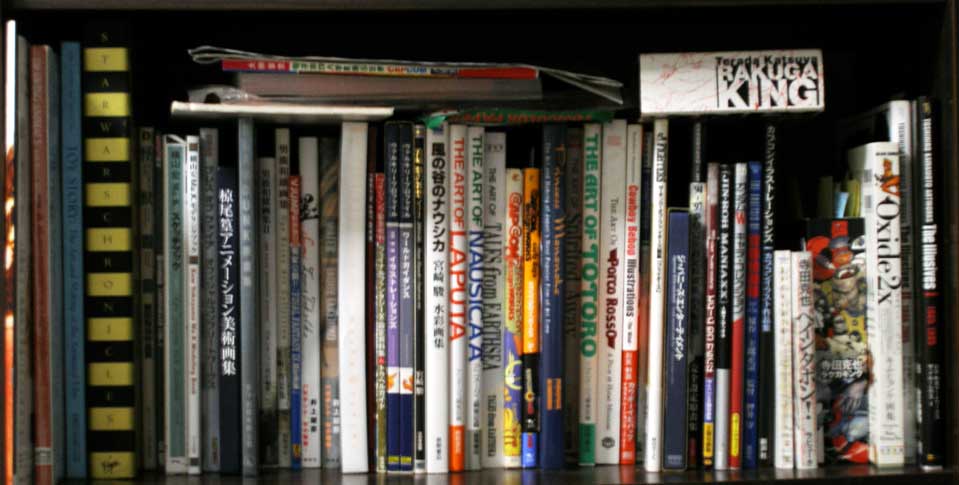Afterward as we walked the few blocks back home, Luke and I recounting our favorite moments in the film, he said, "It's interesting that there weren't any real bad guys in the movie."
There are characters and circumstances which provide a temporary oppositional dynamic:
* Fujimoto (voiced in English by Liam Neeson), Ponyo's father, who seeks out Ponyo after she disappears, uses his wave spirits to 'steal' her back from Ssuke (voiced in English by Noah Lyndsey Cyrus), and stands in opposition to Ponyo's desire to become a human.
* Toki (voiced in English by Lily Tomlin), a cantankerous resident of the senior citizen's center where Ssuke's mother Lisa (voiced by Tina Fey) works.
* The maritime job of Ssuke's father and Lisa's husband Koichi (voiced in English by Matt Damon) which separates Koichi from his family.
* A huge storm that puts Ssuke and Lisa's lives in danger on a perilous car trip home, turns Ssuke's house on a cliff into an island, and represents the front edge of an "imbalance" that threatens the very order of nature.
These narrative elements basically pass the antagonist baton to generate a sense of tension, but none of them is a classic "bad guy". And yet, the story works beautifully.
Which got me wondering: What other 'traditional' movie-narrative elements are not present in Ponyo. Here is a partial list:
* A specific Nemesis character
* Hardly any conflict between characters -- apart from one funny 'argument' between Lisa and Koichi played out using Morse code signals from electric lamps and one confrontation between Fujimoto and Ponyo
* Action that builds to a big Final Struggle: Since there's no Nemesis character, there is no classic 'battle' between Protagonist and Antagonist. Rather everything builds to a 'test' - of sorts - where Ssoke has to answer a question: Where Granmammare (voiced in English by Cate Blanchett) asks Ssoke if he can love Ponyo as a fish as well as a human. He answers yes, Ponyo becomes a human, and balance is restored to nature - just like that. Moreover the biggest action in the movie -- the huge storm -- occurs well before the story's climax which also runs counter to 'traditional' models of screenplay paradigms.Ponder that for a moment: If someone came up to you with a script they had written and they said, "The story doesn't have a Nemesis, there's hardly any conflict, and the Final Struggle is carried out not through action but in dialogue," you -- and I as well -- would almost certainly be concerned about what we were being asked to read.But, as I've noted, Ponyo works as a story.
Let's take a look at what Ponyo does have in the way of narrative elements:
* Engaging lead characters with clear goals: Ssuke wants to find and care for Ponyo. Ponyo wants to go back to Ssuke and become a human.
* Emotional connection for viewers: A father (Fujimoto) concerned about the well-being of his daughter; a boy (Ssuke) who finds a new friend (Ponyo); a fish-girl (Ponyo) who desperately wants to become a human; a mother (Lisa) concerned about her son (Ssuke); a son (Ssuke) in search of his mother (Lisa); old people who wish to become young again. In sum on this score, Ponyo is a deeply personal movie.
* Mythology: The world of Ponyo is a hyper-reality infused with rich, meaningful mythic elements -- the sea as Creator and Destructor, the Great Flood, the child as Seeker, wizardry, and so on.
* Nature: The movie revels in the outdoors, both aquatic and dry land, each (and especially the sea) visualized in rich details.
* Depth: The story is an intimate one - the friendship of Ssuke and Ponyo - but also one of great depth, taking the theme of their 'friendship' and expanding on that to explore the relationship between humanity and Earth, most vitally our 'friendship' with the sea.
And there's this: "Quiet moments." Anne Thompson has a great column about Miyazaki here in which Pixar visionary John Lasseter offers his thoughts (on video) re the great Japanese animator, writer, and director - and one of the reasons Lasseter admires Miyazaki so much is, "He celebrates quiet moments":
What I tell myself everyday.
To all the people watching, I can never ever thank you enough for the kindness to me, I'll think about it for the rest of my life. All I ask is one thing, and this is.. I'm asking this particularily of young people that watch: Please do not be cynical. I hate cynicism - for the record it's my least favorite quality, it doesn't lead anywhere. Nobody in life gets exactly what they thought they were going to get. But if you work really hard and you're kind, amazing things will happen. I'm telling you, amazing things will happen." - Conan 'O'Brien
